A Hard Day’s Night, Richard Lester’s British musical comedy, starring the Beatles—John Lennon, Paul McCartney, George Harrison and Ringo Starr—was released in 1964, during the height of Beatlemania.
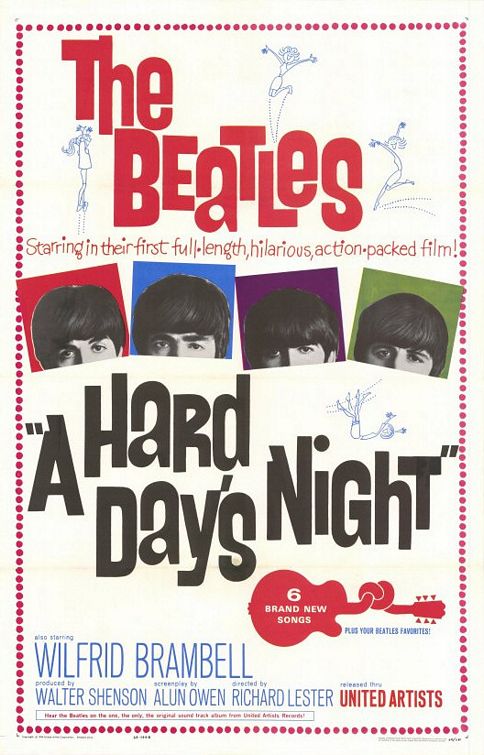
As a result, it became a commercially successful hit, a joyful film that captured not only the genius of the band but also its surrounding contexts of Liverpool and swinging London–the entire zeitgeist.
A revolutionary film in style and form, it marked a new beginning for the genre, which until then was defined and best known by MGM musicals. It is interesting to note that in the same year, My Fair Lady, arguably one of Hollywood’s last classic musicals, won the Best Picture Oscar. Cukor’s stagey musical (not one of his best pictures) could not have been more different than Hard Day’s Night (literally a day and night).
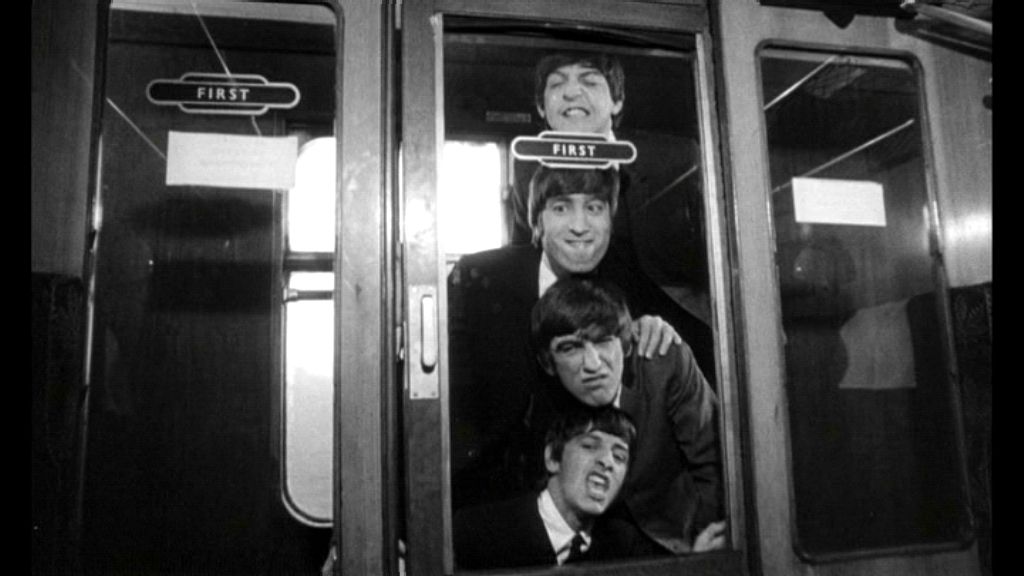
This film, alongside with Lester’s companion piece, Help, are credited for launching a new musical movie style, the mockumentary. Joyously anecdotal, the movie is replete with witty lines of dialogue and inventive black-and-white imagery.
The film is credited with having influenced 1960s spy films, The Monkees’ TV show, and various pop music videos.
The screenplay was written by Alun Owen, then better known for his play, “No Trams to Lime Street,” which the Beatles apparently saw and liked. Owen spent some time with the group, whose members told him their lives were like “a train and a room and a car and a room and a room and a room”–Paul’s grandfather refers to this in the dialogue.
Owen wrote the script from the viewpoint that the Beatles had become prisoners, if not victims, of their own fame, due to their cruelling busy schedule of live performances and studio recording work.
Essentially and deliberately plotless, “A Hard day’s Night” depicts several days in the personal and professional lives of the wildly popular group.
The title derives from Ringo Starr’s interview with disc jockey Dave Hull, in which he says: “We went to do a job, and we’d worked all day and we happened to work all night. I came up still thinking it was day I suppose, and I said, ‘It’s been a hard day,’ and I looked around and saw it was dark so I said, ‘night!’ So we came to ‘A Hard Day’s Night.'”

Harassed by their manager and Paul’s grandfather, and escaping their demanding fans, the Beatles embark from Liverpool by train for a London TV show.” Aboard the train, while trying to relax, various interruptions begin to test their patience, prompting George to go to the goods van for some peace and quiet.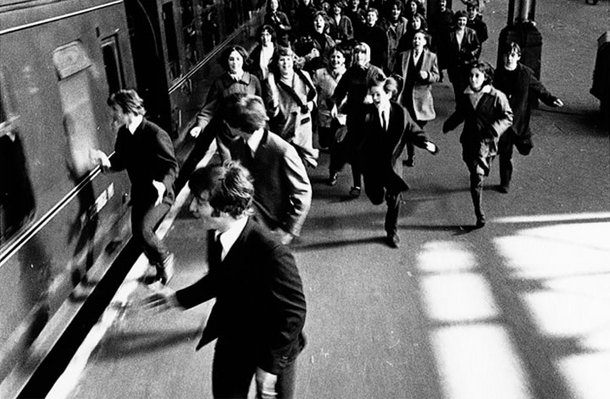
In London, they are taken to a hotel where they feel trapped and restricted. After a night out during which McCartney’s grandfather causes trouble at a casino, they go to the theatre where their performance is to be shot. As the preparations are long and boring, Ringo begins reading a book. McCartney’s grandfather convinces him that he should be outside experiencing life instead of reading books.
Going out, Starr visits a pub, walks alongside a canal, rides a bicycle along a railway station. Meanwhile, the rest of the band frantically (and unsuccessfully) attempts to find him.
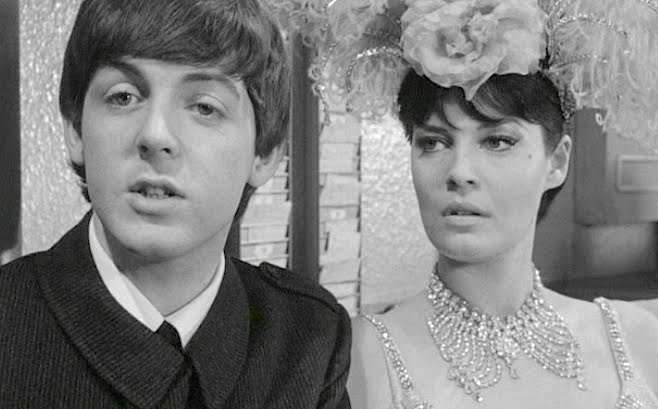
No description of the plot, which is deliberately slender, does justice to the pleasures, textual, visual and musical, of experiencing the movie as a movie.
Made on s howstring budget of $0.5 million, “A Hard Day’s Night” was one of the top ten grossing films of 1964, generating over $12 million at the box-office.
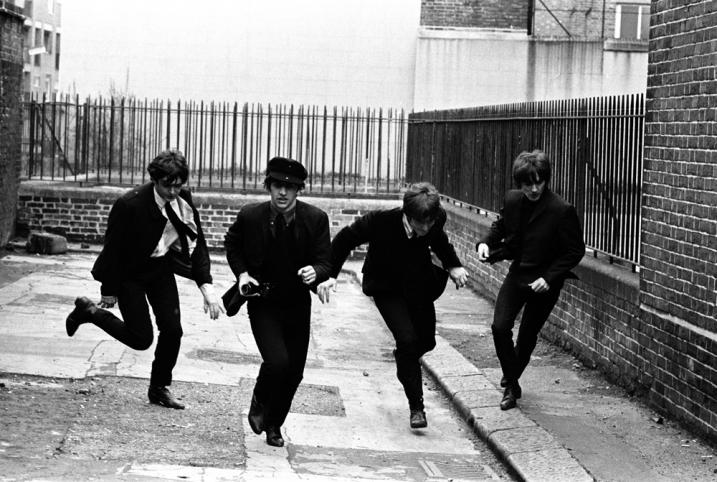
Oscar Nominations: 2
Story and Screenplay (Original): Alun Owen
Scoring (Adapted): George Martin
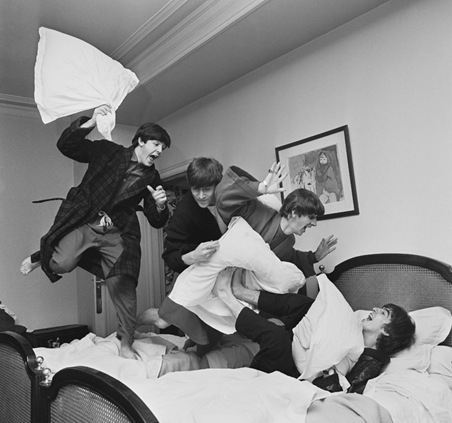
Oscar Awards: None
Oscar Context
The Story abd Screenplay Oscar went to the writers of the Cray Grant old-fashioned comedy, “Father Goose.”
Andre Previn won the Scoring Oscar for the classic but stodgy musical, “MY Fair Lady,” which swept most of the Oscars including Best Picture and Best Director (George Cukor at his fifth and last nomination).
Black-and-white
Running time: 85 Minutes










